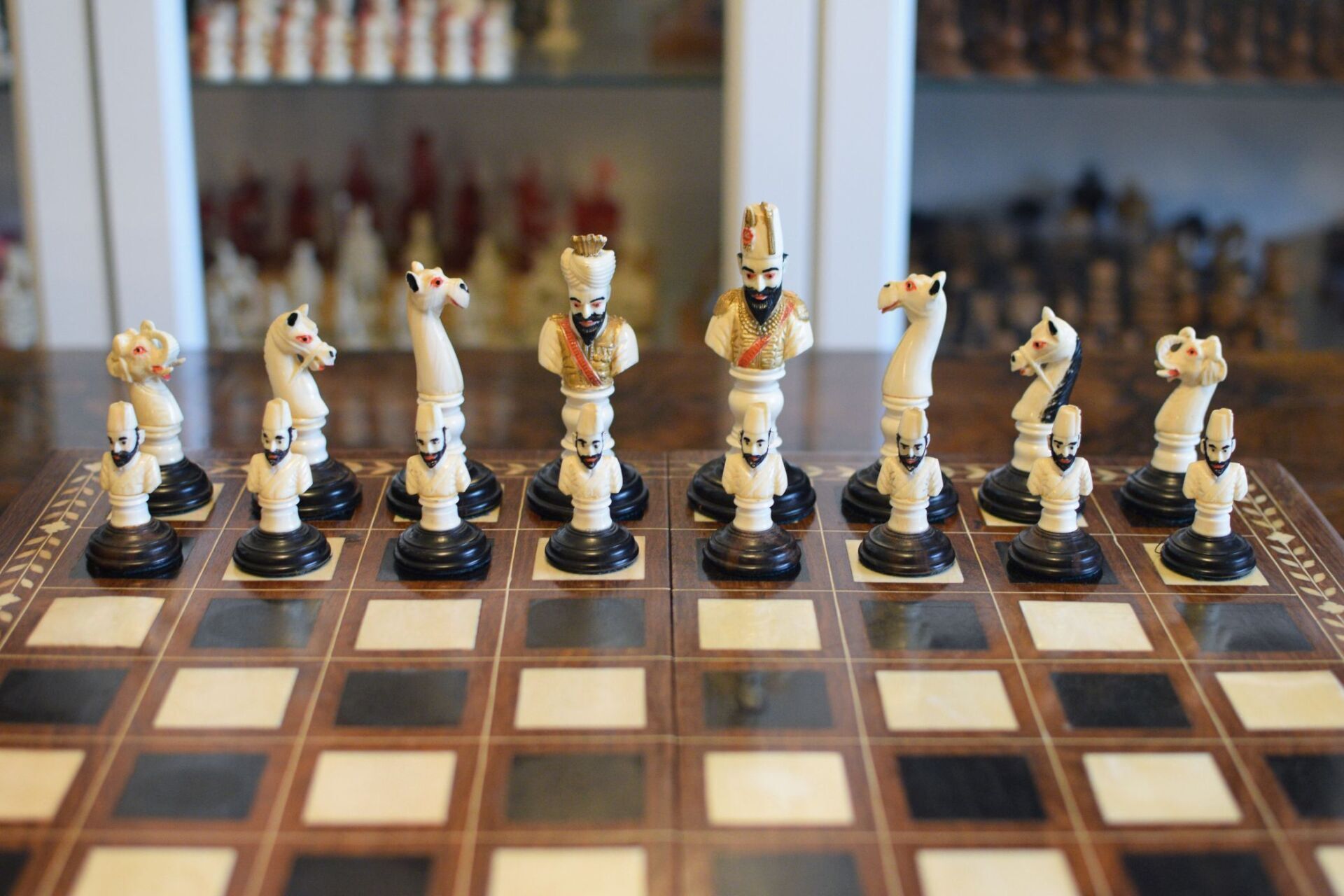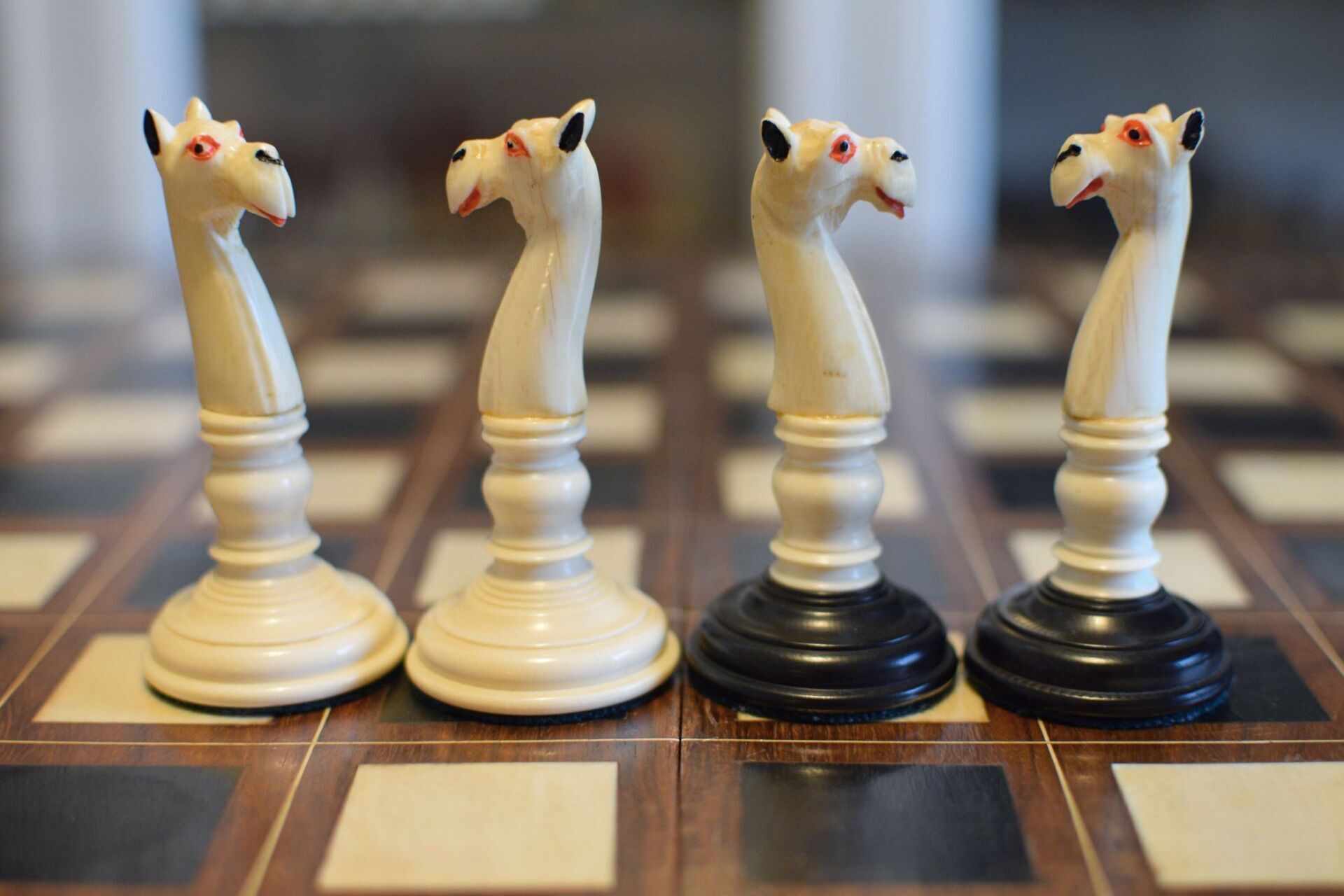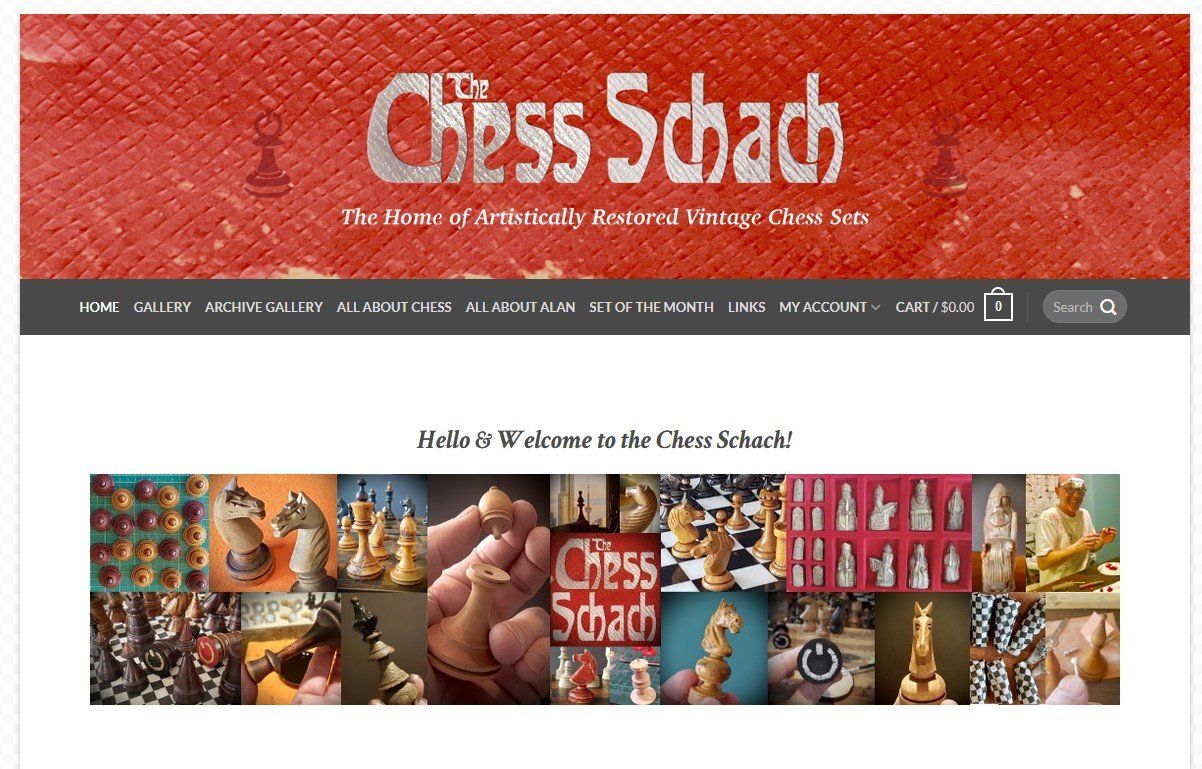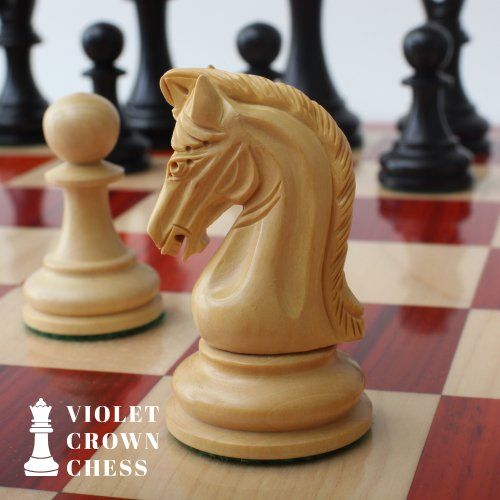Indian Ivory Bust Chess Set "Hindu vs Muslims", ca. 1880-1910
An Indian chess set with polychrome bust type pieces, king size 10.5 cm. The busts are carved from ivory and are placed on turned ivory bases for the white side and turned ebony bases for the black side. I bought the set from a seller, whose father bought it back in the 1960's while working in Baghdad. It came together with a wooden board with ivory and ebony inlays.
Little is known about this type of set. A similar, but significantly smaller (8.8 cm king size) version of this set was sold at Sotheby's in 1979. The lot description of Sotheby's was "Hindu vs Muslims", which fits to the style of the two sides. The kings, queens (or in this case rather the vezirs) and pawns of each side are military staff dressed in uniforms. The black side pieces are mainly wearing a fez, which indicates that these are Indian Muslim forces. The style of the uniform resembles the 19th century uniforms common in today's Pakistan, e.g. the uniforms of the Bahawalpur state forces. The black side pieces are wearing a full beard, while the white side pieces are wearing a moustache. The latter are dressed in a more "colonial" style like late 19th century Hindu forces with the king wearing a helmet and the pawns wearing caps as headdress. The rooks, knights and bishops resemble the typical pieces in antique Indian sets, i.e. elephants for the rooks, horses for the knights and camels for the bishops. The white elephants' trunks are hanging down on the side, while the black elephants' trunks are in a raised position. All pieces with polychrome decoration, in particular black manes and beards, red eyes and golden details on the kings' and vezirs' uniforms.
It is hard to date this set. Sotheby's, in the auction mentioned above, dated the set similar in style to 1850-1900, i.e. the second half of the 19th century. This makes sense, even though I personally think that late 19th century or probably even early 20th century is probably more precise. The motif most likely is the tension along religious lines between the Muslim and the Hindu population in 19th century colonial India. To a certain extent these tensions were always part of Indian history, but they built up in particular in the wake of the Indian Rebellion of 1857. For governance purposes the British colonial administration of India treated the Muslim and the Hindu population as separate groups, thus deepening the divide between these groups and sparking a deeper communal consciousness within these groups. This lead to a series of riots in the second half of the 19th century, starting with some larger riots in 1871-72 and then in a series of regional riots from the 1880's onwards, in particular in the Punjab between 1883 and 1891, in Bombay City between 1893 and 1895 and some major riots starting in the industrial suburbs of Calcutta in May 1891, followed by disturbances at Titaghat Garden Reach in 1896 and the large-scale Talla riots in north Calcutta in 1897. The division of these two groups culminated in the partition of Bengal in 1905, by which a Muslim majority state of East Bengal and a Hindu majority state of West Bengal was created by the British colonial administration.





























